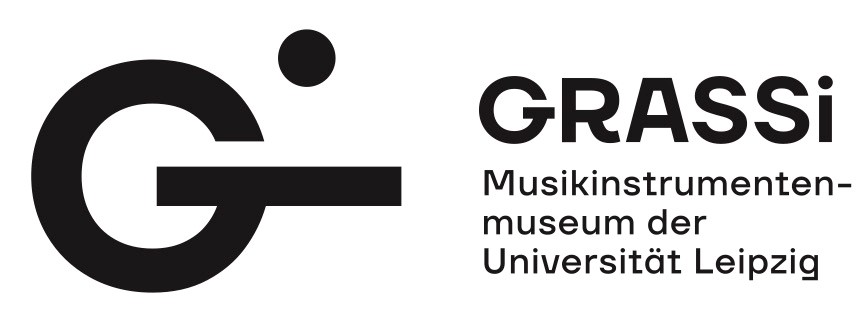European Musical Instruments
The collection of European musical instruments is comprised of pieces dating between the 16th and the 20th century. Focal points are Baroque and 19th century instruments, as well as instruments made in central Germany between the 17th and 20th century. A portion of the collection has been catalogued in detail.
Catalogued examples of keyboard instruments include approximately 20 organ instruments (organs and positive organs), 30 harmoniums, 40 clavichords and 70 harpsichords, spinets, and virginals. The collection also includes approximately 170 pianos, square pianos, and grand pianos, as well as claviorgans. Numerous rarities contribute to the collection's significance. Examples include three 16th century clavichords and six instruments of Bartolomeo Cristofori from Florence, inventor of the fortepiano action. Besides numerous objects from Italy, Austria and Southern Germany, the collection includes a considerable share of keyboard instruments from Saxony, a large portion of which are from Leipzig. Additional mentionable pieces are approximately 150 mostly 20th century melodeons (accordions, bandoneons, concertinas, English concertinas), the majority of which were made in the Vogtland region.
The collection of plucked string instruments
includes approximately 200 guitars and lutes dating from the 16th to
the 20th century. The extensive collection of lutes and archlutes
includes rarities from Italy and Southern Germany, as well as
instruments made by Baroque luthiers such as J. Tielke from Hamburg and
J.Ch. Hoffmann from Leipzig. Additionally, the collection of plucked
string instruments is enriched by approximately 50 citterns, the oldest
of which date from the 16th century. Besides historic guitars of the
18th century, the collection includes a large number of 20th century
guitars made by Richard Jacob, also known as Weißgerber, from
Marktneukirchen. The complete furnishings of his workshop are in
possession of the museum, as well. The 200 European zithers provide
practically complete documentation of the history of this particular
instrument type from Scheitholt and Kratzzither to the concert zither.
A
precious collection of 20 harps primarily contains instruments dating
from the 16th through the 18th century, including a Gothic frame harp,
lever harps and early pedal harps. The collection of stringed
instruments also contains 17 hammered dulcimers dating from the 18th to
the 20th century.
Additionally, there are approximately 300 bowed string instruments dating from the 16th through the 20th century as well as 200 bows, dating primarily from the 19th/20th century. The instruments include Italian Renaissance liras, a valuable collection of 17th and 18th century viols (viola da gambas, viola d'amores, barytons, dessus de viole), historic double basses, numerous violins, violas, and several violoncelli (among them unusual forms such as the violoncello piccolo by J.Ch. Hoffmann of Leipzig). Most of these masterpieces were made in Mittenwald, the Vogtland region, Northern Italy, as well as in the Leipzig workshop of the above mentioned Bach contemporary Hoffmann. There is an abundance of instruments of unusual forms dating from the 19th and 20th century including violins based on the ideas of Ritter, Stelzner and Chanot, an arpeggione and a shoulder cello. Further examples include 35 kit violins as well as a few rebecs dating from the 17th/ 18th century.
The wind instrument category contains approximately 300 reed instruments dating from the 16th through the 20th century (oboes, bassoons, clarinets, bag pipes, shawns, pommers, racketts, crumhorns, and others), among them such rarities as a contra-bassoon dating from the first half of the 18th century and a Renaissance rackett made from ivory. A large part of the flute collection, which contains approximately 400 flutes dating from the 16th through the 20th century, has been catalogued. The collection includes numerous types of recorders and transverse flutes, as well as unusual forms such as echo recorders, walking stick flutes and ocarinas. Additionally, extensive publishing has been done on approximately 130 trumpets dating from the 18th to the 20th century, 50 trombones and 15 tubas. There are about 250 horns and cornetts, many of which were made as early as the 16th century, numerous natural horns from the Baroque and Classical period, and different types of keyed and valved horns dating from the 19th and 20th century.
The collection of nearly 200 percussion and friction instruments dating from the 17th through the 20th century contains, among other instruments, 10 historic military drums, several timpani pairs (including rare wooden timpani), 10 crescents and ceremonial sound producing poles intended for religious precessions dating from the 17th through the 20th century, as well as numerous different idiophones from the 19th and 20th century. Around 1980, Wolf built a collection of valuable drums of different designs in Leipzig. The friction instruments include rarities such as a clavicylinder, a terpodion, and a melodion, as well as three glass harmonicas from the 18th and early 19th century.
Nearly 100 mechanical instruments of the 18th through the 20th century, as well as early recording and playback equipment complete the collection of musical instruments. Apart from musical clocks from Vienna and Berlin, there are several different types of perforated plate mechanisms with steel combs, which were produced in large quantities during the Gründerzeit (the founding epoch) in Leipzig. Additionally, there are player pianos, grand pianos and Vorsetzer (cabinet players) from Leipzig factories, for example that of Hupfeld. Rarities such as sound producing spinning wheels, birdcages and photo albums complete this part of the collection.
There is only a small number of electric and electronic instruments, as those instruments are not a focal point of the collection. One mentionable example is the electric Neo-Bechstein grand piano dating from 1934.





